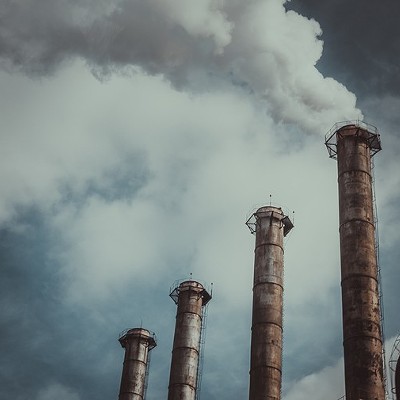Thursday, June 19, 2014
Activists say state's waterways are a 'polluter's dumping ground'
Pennsylvania ranks seventh in the nation in discharges of toxic chemicals into waterways, according to a report issued today by PennEnvironment.
The state’s release of 10,470,231 pounds of toxins in 2012 included about 25,000 pounds of carcinogens such as chromium. It also included other toxins that can cause developmental problems in children, like lead, and pollutants that can harm aquatic ecosytems and other wildlife.
The Pennsylvania figures included 2.3 million pounds of toxic discharges in the Lower Monongahela watershed, according to “Wasting Our Waters,” a report from the Environment America Research & Policy Center. The report, which examined discharges nationally, drew its figures from the federal Toxic Release Inventory.
The state’s single largest polluter — and the 17th-largest in the nation — was US Steel’s Clairton Works, which discharged 2.2 million pounds of toxins, according to the report. That's more than 90 percent of all water discharges in the Lower Monongahela watershed.
Other large polluters in the region include Jewel Acquisition LLC's steel plant in Midland, Beaver County, which released 1.1 million pounds of toxins into the Upper Ohio River.
That means that just those two Southwestern Pennsylvania facilities alone account for about one-third of the state's total discharges.
“More than half our waterways are unsafe for swimming and fishing,” says Kimberly Williams, PennEnvironment’s Pittsburgh campaign organizer, at a morning press conference at the Allegheny River’s “water steps,” near PNC Park.
“For short-term gain for a few folks, we’ll damage our water supply for everybody,” said Pittsburgh resident Kurt Limbach, an activist who attended the press event.
Here's the full report report: PA_wastingwaterways_scrn_061814.pdf.
PennEnvironment and Clean Water Action cited the report to promote restoration of federal Clean Water Act protections — protections the group says have been lost over the years to court rulings in suits brought by polluters.
Because of those rulings, said Williams, 59 percent of Pennsylvania rivers and streams, and drinking water for some eight million state residents, are “at risk of having no protection from pollution” under the Clean Water Act.
The U.S. EPA is currently considering restoring these protections to many of the now-unprotected waterways it originally covered.
According to “Wasting Our Waters,” the top states for toxic water discharges were Indiana (17.8 million pounds), Texas (16.5 million pounds) and Louisiana (12.6 million pounds).
The discharge figures include only direct pipeline releases of toxic pollution into waterways, as self-reported by industry.
They don’t include such significant sources of pollution as agricultural runoff. (Pennsylvania is the main culprit in longstanding pollution problems in Maryland’s Chesapeake Bay.) Nor do they include air discharges that end up in the water (a major pathway for aquatic mercury pollution from sources like coal-fired power plants). Nor, says Williams, do they account for pollutants that might result from hydrofracturing for natural gas.
The composition of industrial discharges varies widely. By volume, for instance, the Clairton Works discharges overwhelmingly consisted of nitrate compounds, says Environment America senior attorney John Rumpler. That might not sound as scary as the 12,000 pounds of cyanide compounds the plant released. But nitrates and other "nutrient pollution" can damage waterways by promoting algae growth that chokes out other life, and leads to large "dead zones" like those in the Chesapeake and the Gulf of Mexico.
PennEnvironment encourages residents to send comments to the EPA supporting restoration of Clean Water Act protection to rivers and streams. You can do that through PennEnvironment’s web site.
“Pennsylvania’s waters shouldn’t be a polluter's dumping ground,” said Williams.
Tags: Clean Water Action , Environment America , toxic pollution , Toxic Release Inventory , water pollution














